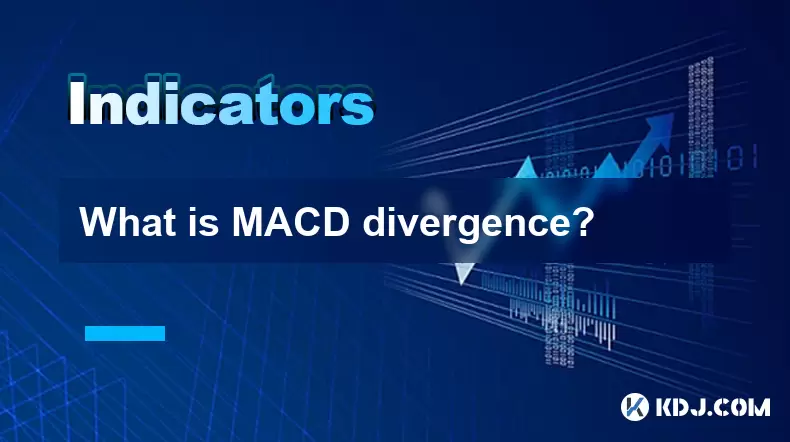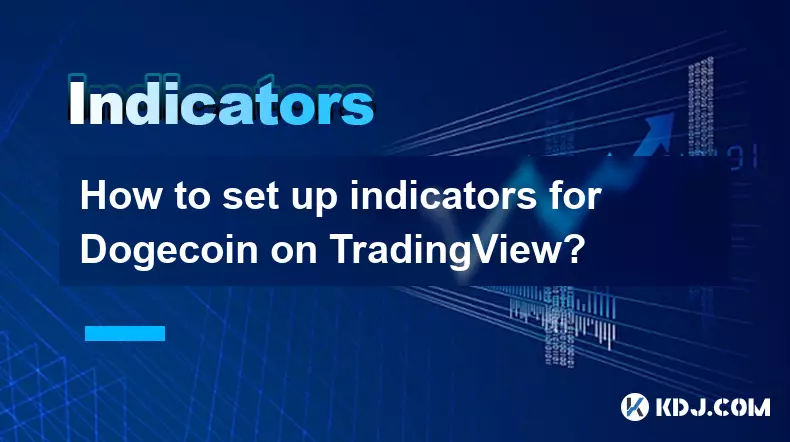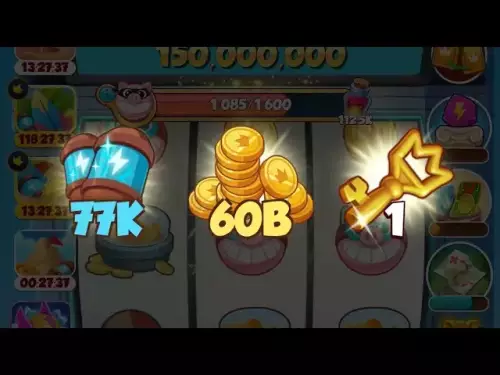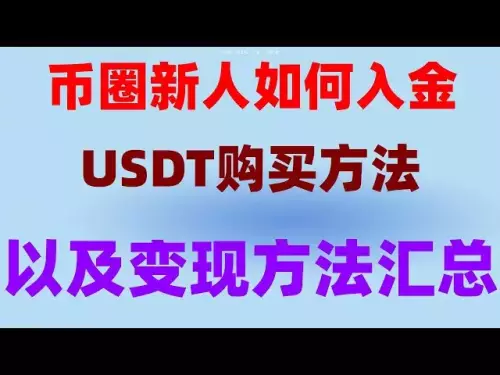-
 Bitcoin
Bitcoin $109500
-2.65% -
 Ethereum
Ethereum $4367
-7.16% -
 XRP
XRP $2.866
-4.11% -
 Tether USDt
Tether USDt $1.001
0.08% -
 BNB
BNB $834.2
-3.96% -
 Solana
Solana $186.7
-8.35% -
 USDC
USDC $0.9998
0.00% -
 TRON
TRON $0.3407
-4.70% -
 Dogecoin
Dogecoin $0.2086
-8.02% -
 Cardano
Cardano $0.8338
-6.54% -
 Chainlink
Chainlink $23.32
-8.27% -
 Hyperliquid
Hyperliquid $42.61
-6.17% -
 Ethena USDe
Ethena USDe $1.001
0.04% -
 Stellar
Stellar $0.3846
-4.40% -
 Sui
Sui $3.346
-7.20% -
 Bitcoin Cash
Bitcoin Cash $542.2
-6.29% -
 Avalanche
Avalanche $23.25
-8.12% -
 Hedera
Hedera $0.2314
-5.09% -
 UNUS SED LEO
UNUS SED LEO $9.576
-0.02% -
 Litecoin
Litecoin $109.6
-5.50% -
 Toncoin
Toncoin $3.120
-4.62% -
 Shiba Inu
Shiba Inu $0.00001198
-6.25% -
 Uniswap
Uniswap $9.635
-10.26% -
 Polkadot
Polkadot $3.731
-7.97% -
 Dai
Dai $1.000
-0.01% -
 Cronos
Cronos $0.1536
-1.37% -
 Bitget Token
Bitget Token $4.465
-3.57% -
 Monero
Monero $263.8
-3.16% -
 Aave
Aave $316.1
-8.24% -
 Ethena
Ethena $0.6228
-8.35%
What is MACD divergence?
MACD divergence occurs when price and momentum move inversely, signaling potential reversals or continuations in crypto trends, especially when confirmed by volume and key support/resistance levels.
Aug 06, 2025 at 06:42 am

Understanding MACD Divergence in Cryptocurrency Trading
MACD divergence is a technical analysis concept used by traders to identify potential reversals in the price of a cryptocurrency. The Moving Average Convergence Divergence (MACD) indicator consists of three components: the MACD line, the signal line, and the histogram. When the price of an asset moves in the opposite direction of the MACD line, a divergence occurs. This mismatch between price action and momentum can signal weakening trends and possible upcoming reversals.
- The MACD line is calculated by subtracting the 26-period Exponential Moving Average (EMA) from the 12-period EMA.
- The signal line is a 9-period EMA of the MACD line.
- The histogram visualizes the distance between the MACD line and the signal line.
When traders observe that the price is making higher highs while the MACD is making lower highs, this is known as bearish divergence, suggesting that upward momentum is fading. Conversely, if the price records lower lows but the MACD forms higher lows, this is referred to as bullish divergence, indicating that downward momentum may be weakening.
Types of MACD Divergence
There are two primary forms of MACD divergence: regular divergence and hidden divergence.
Regular divergence typically signals a potential trend reversal:
- Regular bearish divergence occurs when the price forms higher highs, but the MACD forms lower highs. This often appears at the end of an uptrend.
- Regular bullish divergence happens when the price makes lower lows, yet the MACD forms higher lows, commonly seen at the bottom of a downtrend.
Hidden divergence usually indicates trend continuation rather than reversal:
- Hidden bullish divergence takes place during an uptrend when the price makes a higher low, but the MACD makes a lower low. This suggests the pullback is losing momentum.
- Hidden bearish divergence occurs in a downtrend when the price forms a lower high, but the MACD shows a higher high, indicating the bounce may not sustain.
These patterns are especially useful in the cryptocurrency market, where volatility can create strong momentum shifts, and early detection of reversals or continuations can improve trade timing.
How to Spot MACD Divergence on a Chart
Identifying MACD divergence requires careful observation of both price action and the MACD indicator. Traders typically use candlestick charts alongside the MACD indicator, which is usually displayed in a separate window below the price chart.
- Open a cryptocurrency trading chart on a platform like TradingView or Binance.
- Apply the MACD indicator from the indicators menu.
- Adjust the settings if necessary (default is 12, 26, 9).
- Look for recent swing highs or swing lows in the price.
- Compare these price extremes with the corresponding peaks or troughs on the MACD line.
For example, if Bitcoin reaches a new high at $68,000, then pulls back and rallies to $69,000 (a higher high), but the MACD line peaks lower during the second rally, this forms a bearish regular divergence. This signals that although price increased, the underlying momentum decreased, potentially foreshadowing a downward move.
Using the histogram can enhance accuracy. A shrinking histogram during new price highs suggests weakening momentum, reinforcing the divergence signal.
Confirming MACD Divergence with Other Indicators
While MACD divergence is a powerful signal, relying on it alone can lead to false readings, especially in choppy or sideways cryptocurrency markets. Confirmation from additional tools increases reliability.
- Use support and resistance levels to determine if the divergence occurs near a key price zone.
- Combine with Relative Strength Index (RSI) to check for overbought or oversold conditions aligning with the divergence.
- Apply volume analysis—declining volume during new price highs strengthens bearish divergence.
- Consider trendlines or moving averages to assess the overall trend context.
For instance, if Ethereum shows bullish divergence at a major support level and the RSI is exiting oversold territory, the likelihood of a bounce increases. Similarly, bearish divergence at a resistance level with high RSI values and declining volume strengthens the sell signal.
Practical Steps to Trade MACD Divergence
Executing a trade based on MACD divergence involves a structured approach to entry, stop-loss, and take-profit placement.
- Identify a clear divergence pattern on a preferred timeframe (e.g., 4-hour or daily).
- Wait for price confirmation, such as a bearish engulfing candle after bearish divergence.
- Enter the trade after confirmation:
- For bullish divergence, place a buy order above the confirmation candle’s high.
- For bearish divergence, place a sell order below the confirmation candle’s low.
- Set a stop-loss below the recent swing low (for long trades) or above the recent swing high (for short trades).
- Determine take-profit levels using Fibonacci extensions, previous support/resistance, or risk-reward ratios (e.g., 1:2 or 1:3).
Example: On the Binance BTC/USDT 4H chart, if BTC makes a lower low at $60,000 while MACD forms a higher low, and a bullish engulfing candle appears, a trader might enter long at $60,500, place a stop-loss at $59,800, and target $63,000 based on prior resistance.
Common Mistakes When Using MACD Divergence
Many traders misinterpret or misuse MACD divergence, leading to losses.
- Ignoring the trend context: Divergence in a strong trend may result in hidden divergence rather than reversal. Acting on regular divergence in a powerful bull run can lead to premature entries.
- Trading divergence too early: Waiting for confirmation prevents entering before the reversal actually begins.
- Using default settings on all timeframes: The standard 12-26-9 MACD may not suit very short timeframes like 5-minute charts. Adjusting parameters may improve sensitivity.
- Overlooking market news: A divergence signal may fail if major news (e.g., regulatory announcements) overrides technical patterns.
For example, a bullish divergence on Cardano might appear promising, but if a negative tweet from a major influencer triggers panic selling, the technical signal becomes irrelevant.
Frequently Asked Questions
Can MACD divergence be used on all cryptocurrencies?
Yes, MACD divergence applies to any cryptocurrency with sufficient price history and volume. It works on assets like Bitcoin, Ethereum, and even smaller altcoins, though reliability increases with higher liquidity and trading activity.
Is MACD divergence more effective on certain timeframes?
Higher timeframes such as daily or 4-hour charts tend to produce more reliable MACD divergence signals. Lower timeframes like 5-minute charts generate frequent but often false divergences due to market noise.
How do I adjust MACD settings for better divergence detection?
Modify the EMA periods in the MACD settings. For faster signals on shorter charts, try settings like 8, 17, 9. For smoother, long-term analysis, use 12, 26, 9 or even 21, 55, 9 to reduce false signals.
Does MACD divergence work during sideways markets?
It can appear frequently in ranging markets, but these signals are less reliable. In sideways conditions, price oscillates without a clear trend, making divergence patterns harder to interpret. Combining with Bollinger Bands or ADX helps determine market context.
Disclaimer:info@kdj.com
The information provided is not trading advice. kdj.com does not assume any responsibility for any investments made based on the information provided in this article. Cryptocurrencies are highly volatile and it is highly recommended that you invest with caution after thorough research!
If you believe that the content used on this website infringes your copyright, please contact us immediately (info@kdj.com) and we will delete it promptly.
- Heritage Distilling's Token Deal: A Bold Balance Sheet Strategy
- 2025-08-26 06:45:14
- Coinbase Hack, Solana Shenanigans, and Wallet Woes: What's a Crypto OG to Do?
- 2025-08-26 06:45:14
- Bitcoin, Institutional Adoption, and Volatility: A 2025 Perspective
- 2025-08-26 08:05:14
- MAGACOIN, Ethereum, and XRP Growth: What's the Buzz?
- 2025-08-26 08:30:13
- ETHZilla's Bold Moves: Share Buyback and Ethereum Holdings Under Scrutiny
- 2025-08-26 08:05:14
- Cardano, ADA Price, and the ETH L2 Meme Coin Frenzy: What's Next?
- 2025-08-26 08:50:13
Related knowledge

How to set up indicators for Dogecoin on TradingView?
Aug 25,2025 at 04:23pm
Understanding Dogecoin and TradingView1. Dogecoin, initially created as a meme-based cryptocurrency, has evolved into a widely traded digital asset. I...

What does it mean when the +DI and -DI cross frequently in the DMI indicator but the ADX is flattening?
Aug 11,2025 at 03:15am
Understanding the DMI Indicator ComponentsThe Directional Movement Index (DMI) is a technical analysis tool composed of three lines: the +DI (Positive...

What does the sudden appearance of a "dark cloud cover" candlestick pattern during an uptrend indicate?
Aug 13,2025 at 11:35am
Understanding the 'Dark Cloud Cover' Candlestick PatternThe dark cloud cover is a bearish reversal pattern in technical analysis that typically appear...

What does it mean when the moving average, MACD, and RSI all send buy signals simultaneously?
Aug 11,2025 at 01:42pm
Understanding the Convergence of Technical IndicatorsWhen the moving average, MACD, and RSI all generate buy signals at the same time, traders interpr...

What does it mean when both the KDJ indicator and the RSI show overbought signals simultaneously?
Aug 13,2025 at 11:35am
Understanding the KDJ Indicator in Cryptocurrency TradingThe KDJ indicator is a momentum oscillator derived from the Stochastic Oscillator, widely use...

What does it mean when the price is trading above the SAR indicator but the red dots are densely packed?
Aug 09,2025 at 11:49pm
Understanding the SAR Indicator and Its Visual SignalsThe SAR (Parabolic Stop and Reverse) indicator is a technical analysis tool used primarily to de...

How to set up indicators for Dogecoin on TradingView?
Aug 25,2025 at 04:23pm
Understanding Dogecoin and TradingView1. Dogecoin, initially created as a meme-based cryptocurrency, has evolved into a widely traded digital asset. I...

What does it mean when the +DI and -DI cross frequently in the DMI indicator but the ADX is flattening?
Aug 11,2025 at 03:15am
Understanding the DMI Indicator ComponentsThe Directional Movement Index (DMI) is a technical analysis tool composed of three lines: the +DI (Positive...

What does the sudden appearance of a "dark cloud cover" candlestick pattern during an uptrend indicate?
Aug 13,2025 at 11:35am
Understanding the 'Dark Cloud Cover' Candlestick PatternThe dark cloud cover is a bearish reversal pattern in technical analysis that typically appear...

What does it mean when the moving average, MACD, and RSI all send buy signals simultaneously?
Aug 11,2025 at 01:42pm
Understanding the Convergence of Technical IndicatorsWhen the moving average, MACD, and RSI all generate buy signals at the same time, traders interpr...

What does it mean when both the KDJ indicator and the RSI show overbought signals simultaneously?
Aug 13,2025 at 11:35am
Understanding the KDJ Indicator in Cryptocurrency TradingThe KDJ indicator is a momentum oscillator derived from the Stochastic Oscillator, widely use...

What does it mean when the price is trading above the SAR indicator but the red dots are densely packed?
Aug 09,2025 at 11:49pm
Understanding the SAR Indicator and Its Visual SignalsThe SAR (Parabolic Stop and Reverse) indicator is a technical analysis tool used primarily to de...
See all articles

























































































